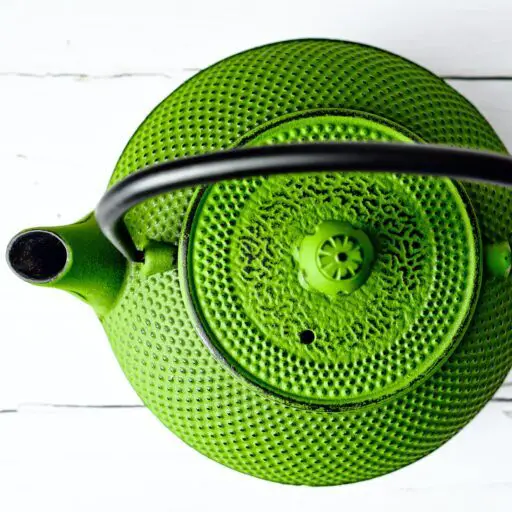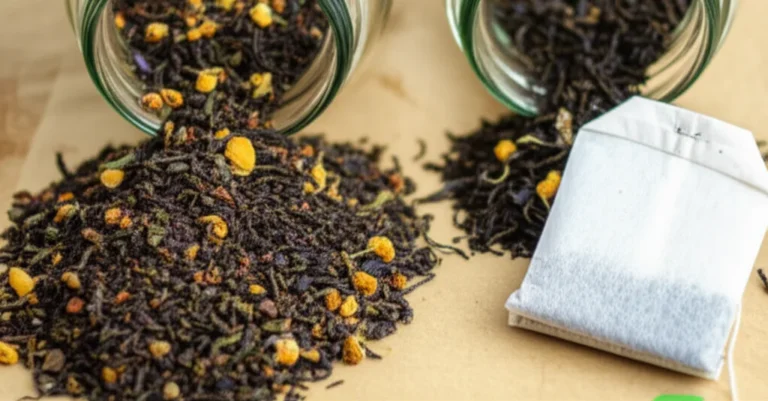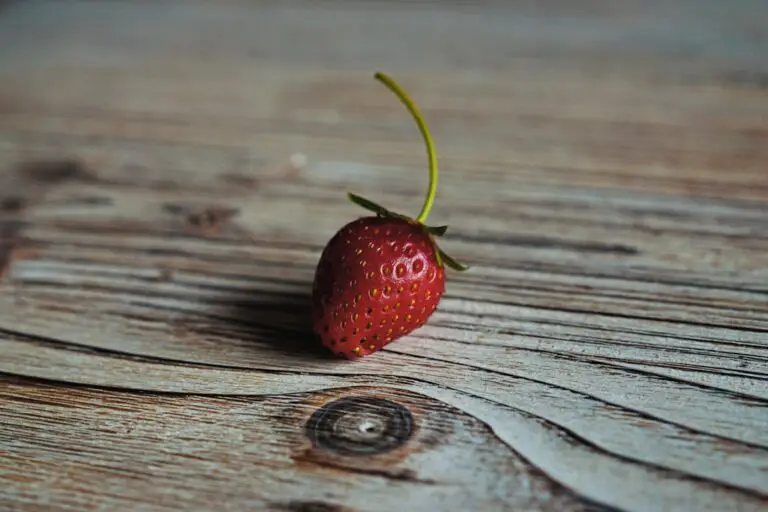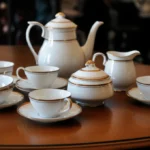Support our educational content for free when you purchase through links on our site. Learn more
Which Country Has the Tastiest Tea in the World? 🌍 (2025 Edition)
Have you ever sipped a cup of tea so exquisite it made you wonder, “Where on Earth does this magic come from?” Well, you’re not alone! Tea lovers around the globe debate endlessly about which country produces the tastiest tea. From the misty mountains of Darjeeling to the serene tea gardens of Taiwan, each region boasts unique flavors shaped by centuries of tradition, climate, and craftsmanship. But which country truly takes the crown in 2025?
In this article, we embark on a flavorful journey across seven top tea-producing countries, revealing their signature teas, cultural rituals, and expert tasting notes. Plus, we’ll share insider brewing secrets and bust common myths to help you savor every sip like a pro. Stick around for our exclusive taste profile chart and discover where you can buy the best authentic teas to start your own global tea tasting adventure!
Key Takeaways
- No single “best” tea country exists; taste is subjective and influenced by culture, terroir, and processing.
- China, India, Japan, Sri Lanka, Taiwan, and Kenya lead the world with distinct, high-quality teas ranging from delicate green teas to bold black and complex oolongs.
- Brewing technique and water quality are crucial to unlocking a tea’s full flavor potential.
- Cultural tea rituals enhance the tasting experience and reflect each country’s unique relationship with tea.
- Premium brands like Teavana, Harney & Sons, Dilmah, and Ten Ren offer authentic teas from these regions, perfect for exploring global flavors at home.
Ready to taste the world’s finest teas?
- 👉 Shop Teavana Teas: Amazon | Teavana Official Website
- Explore Dilmah Ceylon Teas: Amazon | Dilmah Official Website
- Discover Taiwanese Oolongs by Ten Ren: Amazon
Dive in and find your perfect cup!
Table of Contents
- ⚡️ Quick Tips and Facts About the Tastiest Teas Worldwide
- 🌱 The Rich History and Origins of Tea: A Global Journey
- 🌍 Which Country Has the Tastiest Tea? Our Expert Rankings
- 1. China: The Birthplace of Tea and Its Diverse Flavors
- 2. India: The Land of Robust Assam and Elegant Darjeeling
- 3. Japan: The Art of Matcha and Delicate Green Teas
- 4. Sri Lanka (Ceylon): Bright, Bold, and Refreshing Ceylon Teas
- 5. Taiwan: The Home of Oolong and Unique Tea Craftsmanship
- 6. Kenya: Africa’s Rising Star in Black Tea Production
- 7. Other Noteworthy Tea-Producing Countries
- 🍵 What Makes Tea Taste Great? Key Factors Explained
- ☕️ How to Taste Tea Like a Pro: Expert Tips and Tricks
- 🎉 Fun Tea Traditions and Rituals Around the World
- 🛒 Where to Buy the Best Authentic Teas: Trusted Brands and Sources
- 💡 Brewing Secrets: How to Unlock the Full Flavor of Your Tea
- 🌿 Health Benefits of Different Types of Tea
- 📊 Taste Profiles and Tea Comparison Chart
- 🧳 Tea Tourism: Best Destinations for Tea Lovers
- 🔍 Debunking Common Myths About Tea Taste and Quality
- 📝 Conclusion: Our Final Verdict on the Tastiest Tea Country
- 🔗 Recommended Links for Tea Enthusiasts
- ❓ Frequently Asked Questions About Tea Taste and Origins
- 📚 Reference Links and Further Reading
⚡️ Quick Tips and Facts About the Tastiest Teas Worldwide
Welcome to the ultimate tea tasting adventure! If you’ve ever wondered which country has the tastiest tea in the world, you’re in the right place. At Tea Brands™, where we specialize in helping you sip and savor the finest tea, we’ve brewed up some quick facts to get you started:
- ✅ Taste is subjective! What’s tasty to one might be meh to another. But some countries consistently produce teas that delight palates worldwide.
- ✅ China, India, Japan, Sri Lanka, Taiwan, and Kenya are the heavy hitters in tea production and flavor diversity.
- ✅ Altitude, climate, and processing methods dramatically affect tea taste. High-grown teas tend to be more delicate and floral, while low-grown teas are bolder and maltier.
- ✅ Tea types matter: Green, black, oolong, white, pu-erh, and specialty blends each offer unique flavor profiles.
- ✅ Cultural rituals and brewing techniques can enhance or mask a tea’s natural flavor.
- ✅ Fun fact: Morocco’s mint tea, made with Chinese gunpowder green tea pellets, is a sweet, foamy delight served three times to guests!
Curious to dive deeper? We’ll unpack all these points and more, including personal stories from our expert tasters, so keep reading! For a quick primer on the best-tasting teas, check out our related article on Which tea is best taste in world?.
🌱 The Rich History and Origins of Tea: A Global Journey
Tea’s story is as rich and complex as its flavor. Legend credits Emperor Shen Nong of China with discovering tea around 2737 BC when a leaf accidentally fell into his boiling water. From there, tea traveled along the Silk Road, evolving into a global phenomenon.
- China: The birthplace of tea, home to all six tea families (green, black, white, oolong, yellow, and pu-erh).
- India: Introduced tea cultivation in the 19th century, now famous for Assam and Darjeeling teas.
- Japan: Elevated tea to an art form with the ceremonial preparation of matcha.
- Sri Lanka: Formerly Ceylon, switched from coffee to tea production after a blight, now renowned for Ceylon tea.
- Kenya: Africa’s tea giant, known for robust black teas.
Tea’s journey is not just about plants but culture, ceremony, and community. This history shapes what we taste today and why certain teas are prized. For a deep dive into tea’s origins and cultural significance, see the Tea Brand Guides.
🌍 Which Country Has the Tastiest Tea? Our Expert Rankings
Taste buds ready? Let’s explore the top contenders for the tastiest tea in the world, based on our expert tasters’ experience and global consumer insights. Spoiler alert: each country brings something unique to the table!
1. China: The Birthplace of Tea and Its Diverse Flavors
China is the undisputed cradle of tea. Our tasters rave about the complexity and variety of Chinese teas, from the delicate Longjing green tea to the rich, earthy Pu-erh.
- Key Regions: Fujian (Da Hong Pao, Tie Guan Yin), Yunnan (Pu-erh), Zhejiang (Longjing).
- Flavor Notes: Floral, vegetal, smoky, fruity, and sometimes funky (in fermented teas).
- Fun Fact: Chinese tea culture includes elaborate ceremonies and social teahouses, especially in Sichuan.
Why we love it: The sheer diversity means there’s a Chinese tea for every palate. Our tasters often reach for a cup of Tie Guan Yin when craving a floral, creamy oolong.
2. India: The Land of Robust Assam and Elegant Darjeeling
India’s teas are bold, bright, and full-bodied. Assam teas deliver malty, robust flavors perfect for breakfast blends, while Darjeeling teas are light, aromatic, and muscatel-flavored.
- Masala Chai: A spicy, milky concoction beloved worldwide.
- Regions: Assam, Darjeeling, Nilgiri, Sikkim.
- Cultural Note: Street vendors, or “chai wallahs,” serve authentic chai in small clay cups, a must-try experience.
Our take: Indian teas are perfect for those who love a strong, invigorating cup or a cozy, spiced chai. The variety is impressive, and the terroir shines through.
3. Japan: The Art of Matcha and Delicate Green Teas
Japanese teas are all about precision and umami. Matcha, the powdered green tea used in tea ceremonies, has a grassy, slightly bitter flavor balanced by sweet confections.
- Popular Types: Sencha, Gyokuro, Genmaicha, Hojicha, and Matcha.
- Flavor Profile: Fresh, grassy, umami-rich, sometimes nutty or roasted.
- Cultural Highlight: The tea ceremony (“Sado”) elevates tea drinking into a mindful ritual.
Why try it: If you want a clean, refreshing cup with a spiritual twist, Japanese teas are your go-to.
4. Sri Lanka (Ceylon): Bright, Bold, and Refreshing Ceylon Teas
Sri Lanka’s teas are known for their brightness and briskness, with flavor varying by altitude.
- High-grown teas: Floral, citrusy, delicate.
- Low-grown teas: Stronger, maltier, with balsamic notes.
- Tourism: Plantation tours around Kandy and Nuwara Eliya are a treat for tea lovers.
Our verdict: Ceylon teas are versatile and perfect for those who enjoy a lively cup with a citrus twist.
5. Taiwan: The Home of Oolong and Unique Tea Craftsmanship
Taiwanese teas are prized for their refined oolongs, which balance floral and creamy notes.
- Famous Varieties: Bao Zhong, Jin Xuan, Dong Ding, Oriental Beauty.
- Flavor: Floral, buttery, complex with a lingering sweetness.
- Culture: Tea is a daily ritual, with an emphasis on craftsmanship and quality.
Tasting note: Our tasters find Taiwanese oolongs to be some of the most elegant and rewarding teas.
6. Kenya: Africa’s Rising Star in Black Tea Production
Kenya produces strong, bright black teas often used in blends and teabags but increasingly recognized for whole-leaf quality.
- Flavor: Lively, brisk, with a bright copper color.
- Regions: Kericho and the Rift Valley.
- Fun Fact: Kenya hosts the second-largest tea auction globally.
Why it matters: Kenyan teas are affordable, flavorful, and perfect for those who like a bold cup.
7. Other Noteworthy Tea-Producing Countries
- Turkey: Famous for strong black tea served in tulip-shaped glasses.
- Vietnam: Known for green teas and unique scented teas like lotus and jasmine.
- Argentina: Yerba mate, a caffeinated herbal infusion with a social drinking ritual.
- Russia: Tea culture revolves around the samovar and strong black teas served with nibbles.
Each country offers a unique taste experience shaped by culture and climate.
🍵 What Makes Tea Taste Great? Key Factors Explained
Why does tea from one place taste so different from another? Here’s the lowdown:
- Terroir: Soil, altitude, rainfall, and temperature affect leaf chemistry.
- Cultivar: Different tea plant varieties produce unique flavors.
- Harvesting: Timing (first flush vs. second flush) influences taste intensity.
- Processing: Oxidation, fermentation, roasting, and drying methods shape flavor profiles.
- Water Quality: The mineral content and temperature of water can make or break your brew.
- Brewing Technique: Steeping time, water temperature, and leaf quantity all matter.
Our tasters swear by precise brewing to unlock the full potential of each tea.
☕️ How to Taste Tea Like a Pro: Expert Tips and Tricks
Ready to become a tea tasting ninja? Here’s how we do it at Tea Brands™:
- Look: Observe the dry leaves’ color, shape, and aroma.
- Smell: Inhale the dry leaves, then the brewed tea, noting floral, fruity, or earthy notes.
- Sip: Take a small sip, letting the tea coat your tongue. Notice sweetness, bitterness, astringency, and body.
- Swallow and Savor: Pay attention to the aftertaste or “finish.”
- Compare: Taste multiple teas side-by-side to appreciate subtle differences.
Pro tip: Use a clean palate and avoid strong flavors before tasting.
🎉 Fun Tea Traditions and Rituals Around the World
Tea is more than a drink; it’s a cultural experience:
- Morocco: Mint tea poured from a height to create foam, served three times to guests.
- Japan: The tea ceremony, a choreographed ritual emphasizing mindfulness.
- UK: Afternoon tea with scones, sandwiches, and clotted cream.
- Turkey: Tea served boiling hot in tulip-shaped glasses, accompanied by sweet or salty biscuits.
- Russia: Samovar-brewed tea served with jams and pastries.
These rituals enhance the tea’s taste and your enjoyment.
🛒 Where to Buy the Best Authentic Teas: Trusted Brands and Sources
Finding authentic, high-quality tea is half the battle. Here are our top picks:
| Brand | Specialty | Why We Recommend It | Where to Buy |
|---|---|---|---|
| Teavana | Wide variety, premium | Consistent quality, great for beginners | Amazon |
| Harney & Sons | Classic blends, loose leaf | Rich flavor profiles, elegant packaging | Amazon |
| Dilmah | Ceylon teas | Authentic Sri Lankan tea, single-origin | Dilmah Official Website |
| Twinings | Global blends | Trusted brand with centuries of experience | Amazon |
| Ten Ren | Taiwanese oolong | High-quality oolongs, traditional processing | Amazon |
| Numi Organic | Organic, specialty blends | Health-conscious options, great flavor | Amazon |
👉 CHECK PRICE on:
- Teavana: Amazon | Teavana Official Website
- Dilmah: Amazon | Dilmah Official Website
- Ten Ren: Amazon
For more brand spotlights and guides, visit our Tea Brand Spotlights and Tea Brand Guides sections.
💡 Brewing Secrets: How to Unlock the Full Flavor of Your Tea
Brewing tea is an art and science. Here’s how to get the most out of your leaves:
- Water Temperature:
- Green teas: 160–180°F (70–80°C)
- Black teas: 200–212°F (93–100°C)
- Oolong teas: 185–205°F (85–96°C)
- Steeping Time:
- Green teas: 1–3 minutes
- Black teas: 3–5 minutes
- Oolong teas: 3–5 minutes
- Leaf Quantity: About 1 teaspoon per 8 oz cup.
- Multiple Infusions: Many premium teas, especially oolongs and pu-erh, can be steeped multiple times, revealing evolving flavors.
Our tasters recommend using filtered water and pre-warming your teapot or cup for best results.
🌿 Health Benefits of Different Types of Tea
Tea isn’t just tasty; it’s good for you! Here’s a quick rundown:
| Tea Type | Key Benefits | Notable Compounds |
|---|---|---|
| Green Tea | Antioxidants, metabolism boost, heart health | Catechins, EGCG |
| Black Tea | Heart health, gut health, mental alertness | Theaflavins, caffeine |
| Oolong Tea | Weight management, cholesterol reduction | Polyphenols, antioxidants |
| White Tea | Skin health, anti-aging | High antioxidants, low caffeine |
| Pu-erh Tea | Digestion aid, cholesterol lowering | Microbial fermentation products |
For detailed health insights, check our Health Benefits of Tea articles.
📊 Taste Profiles and Tea Comparison Chart
To help you navigate the world of tea flavors, here’s a handy comparison chart from our tasters’ notes:
| Country/Tea Type | Flavor Profile | Body | Aroma | Best For | Brewing Tip |
|---|---|---|---|---|---|
| China (Longjing) | Nutty, vegetal, sweet | Light | Fresh, grassy | Afternoon sipping | 175°F, 2 min |
| India (Assam) | Malty, bold, brisk | Full | Earthy, rich | Breakfast blends | 212°F, 4 min |
| Japan (Matcha) | Umami, grassy, slightly bitter | Medium | Fresh, vegetal | Ceremonial, energy boost | Whisk with 160°F water |
| Sri Lanka (Ceylon) | Bright, citrusy, brisk | Medium | Floral, citrus | Iced tea, blends | 205°F, 3 min |
| Taiwan (Oolong) | Floral, creamy, complex | Medium | Sweet, fruity | Multiple infusions | 195°F, 3 min, multiple steeps |
| Kenya (Black) | Strong, brisk, astringent | Full | Bright, lively | Teabags, blends | 210°F, 4 min |
🧳 Tea Tourism: Best Destinations for Tea Lovers
Want to taste tea where it’s grown? Here are some top tea tourism spots:
- Sri Lanka: Explore lush plantations in Nuwara Eliya and visit the Ceylon Tea Museum in Kandy.
- India: Darjeeling’s Himalayan vistas and Assam’s sprawling estates offer immersive experiences.
- China: Fujian and Yunnan provinces for traditional tea ceremonies and ancient tea trees.
- Taiwan: High-mountain oolong farms and tea houses in Nantou County.
- Kenya: Kericho’s tea estates and the historic Tea Hotel for hands-on picking experiences.
Tea tourism combines breathtaking scenery with the joy of tasting fresh, authentic teas. It’s a must for serious tea lovers!
🔍 Debunking Common Myths About Tea Taste and Quality
Let’s clear up some tea tasting misconceptions:
- ❌ Myth: Darker tea always means stronger flavor.
Fact: Oxidation affects color but not necessarily strength; brewing time and leaf quality matter more. - ❌ Myth: Tea bags are always inferior to loose leaf.
Fact: While many tea bags use lower-grade leaves, some brands like Harney & Sons and Twinings offer high-quality bagged teas. - ❌ Myth: Adding milk ruins the taste of fine tea.
Fact: Some black teas, especially Assam and Ceylon, pair beautifully with milk, enhancing creaminess. - ❌ Myth: Green tea should be brewed with boiling water.
Fact: Too hot water scorches delicate leaves, causing bitterness.
Knowing these facts helps you appreciate tea’s nuances and avoid common pitfalls.
Before we move on to our final verdict, don’t miss the featured video embedded earlier in this article, where Data Prix takes you on a whirlwind tour of popular tea brands from different countries. It’s a quick, fun visual complement to our deep dive!
📝 Conclusion: Our Final Verdict on the Tastiest Tea Country
After a global tour through the world’s most celebrated tea-producing countries, what’s the final answer to which country has the tastiest tea in the world? Well, here’s the truth: there is no single “best” tea country because taste is a wonderfully subjective journey shaped by culture, terroir, and personal preference.
- China dazzles with its incredible variety and centuries-old tea traditions, offering everything from delicate green teas to bold pu-erh.
- India charms with robust, malty Assam and the elegant, muscatel-scented Darjeeling, plus the beloved masala chai ritual.
- Japan elevates tea to an art form with its umami-rich matcha and fresh, grassy greens.
- Sri Lanka’s bright, brisk Ceylon teas are versatile and refreshing.
- Taiwan’s refined oolongs provide a complex, creamy experience.
- Kenya offers lively, bold black teas that are gaining global respect.
Our expert tasters at Tea Brands™ recommend exploring teas from multiple countries to find your personal favorite. If you love floral and delicate, try Chinese or Taiwanese oolongs. For bold and malty, Indian Assam or Kenyan black teas are perfect. For a spiritual, mindful experience, Japanese matcha is unmatched.
Remember: The tastiest tea is the one you enjoy most, brewed with care and shared with good company. So, why settle for one when you can savor the world’s best in your teacup?
🔗 Recommended Links for Tea Enthusiasts
Ready to start your tasting journey? Here are some trusted brands and books to deepen your tea knowledge and enjoyment:
- Teavana: Amazon | Teavana Official Website
- Harney & Sons: Amazon
- Dilmah: Amazon | Dilmah Official Website
- Twinings: Amazon
- Ten Ren: Amazon
- Numi Organic: Amazon
Books to Brew Your Knowledge:
- The Story of Tea: A Cultural History and Drinking Guide by Mary Lou Heiss and Robert J. Heiss — Amazon
- The Tea Enthusiast’s Handbook by Mary Lou Heiss — Amazon
- The Art and Craft of Tea by Joseph Uhl — Amazon
Sip, savor, and enjoy your tea adventures!
❓ Frequently Asked Questions About Tea Taste and Origins
What are the top tea-producing countries in the world and their unique tea flavors?
The top tea producers include China, India, Kenya, Sri Lanka, Japan, Taiwan, Vietnam, Turkey, Iran, and Indonesia. Each offers distinct flavors:
- China: Wide range from floral green teas to earthy pu-erh.
- India: Malty Assam, aromatic Darjeeling, and spiced masala chai.
- Kenya: Strong, bright black teas with briskness.
- Sri Lanka: Bright, citrusy Ceylon teas varying by altitude.
- Japan: Umami-rich, grassy green teas like matcha and sencha.
- Taiwan: Floral and creamy oolongs with complex aromas.
These countries’ unique climates, cultivars, and processing methods create their signature tastes.
How do different tea cultures around the world impact the taste and preparation of tea?
Tea culture shapes not only how tea is brewed but also how it tastes:
- China’s gongfu tea ceremony uses multiple short infusions, highlighting evolving flavors.
- Japan’s tea ceremony emphasizes matcha’s bitter, grassy notes balanced with sweets.
- India’s chai culture blends black tea with spices and milk, creating a rich, spicy flavor.
- Morocco infuses green tea with mint and sugar, served frothy and sweet.
- Turkey serves strong black tea in small glasses, often without milk, emphasizing boldness.
Cultural rituals often enhance or complement the tea’s natural flavor, making the experience unique.
Which type of tea is considered the rarest and most expensive in the world, and where is it from?
Da Hong Pao, a rare and legendary oolong tea from China’s Wuyi Mountains, is among the most expensive teas globally. Some original bushes are centuries old, and the tea commands astronomical prices due to its rarity and complex flavor profile—floral, roasted, and mineral notes with a lingering sweetness.
Other rare teas include Yellow Gold Tea Buds from China and Gyokuro from Japan, prized for their delicate, umami-rich flavors.
What are some common factors that contribute to the distinct taste of tea from different regions and countries?
Several factors influence tea taste:
- Terroir: Soil composition, altitude, rainfall, and temperature affect leaf chemistry.
- Cultivar: Different tea plant varieties produce unique flavors.
- Harvesting Time: First flush (early spring) teas tend to be lighter and more delicate; later flushes are stronger.
- Processing: Oxidation level, fermentation, roasting, and drying methods shape flavor profiles.
- Water Quality and Brewing: Mineral content and brewing parameters affect extraction and taste.
Together, these create the signature character of each region’s teas.
How can I tell if a tea is high quality just by looking or smelling it?
- Dry Leaves: High-quality teas have whole, unbroken leaves with vibrant color and a fresh aroma.
- Aroma: Should be clean, fragrant, and inviting—floral, fruity, or vegetal depending on type.
- Uniformity: Consistent leaf size and shape indicate careful processing.
- Absence of Dust: Too much dust or fannings usually means lower quality.
Brewing and tasting remain the ultimate tests, but these visual and olfactory cues help.
Are tea bags always inferior to loose leaf tea?
Not necessarily! While many tea bags contain lower-grade dust and fannings, some premium brands like Harney & Sons and Twinings offer high-quality, whole-leaf teas in pyramid-shaped bags that allow better infusion. Loose leaf tea generally offers more flavor complexity, but good bagged teas can be convenient and tasty.
📚 Reference Links and Further Reading
For further verification and exploration, here are reputable sources and official pages:
- The countries that produce high-end premium teas – Vinhood
- Dilmah Official Website
- Teavana Official Website
- Harney & Sons Official Website
- Twinings Official Website
- Ten Ren Tea Official Website
- Tea Association of the USA
- World Tea News
These sources provide in-depth data on tea production, culture, and trends to enrich your tea knowledge.
Happy sipping and exploring the world’s tastiest teas with us at Tea Brands™! 🍵✨





